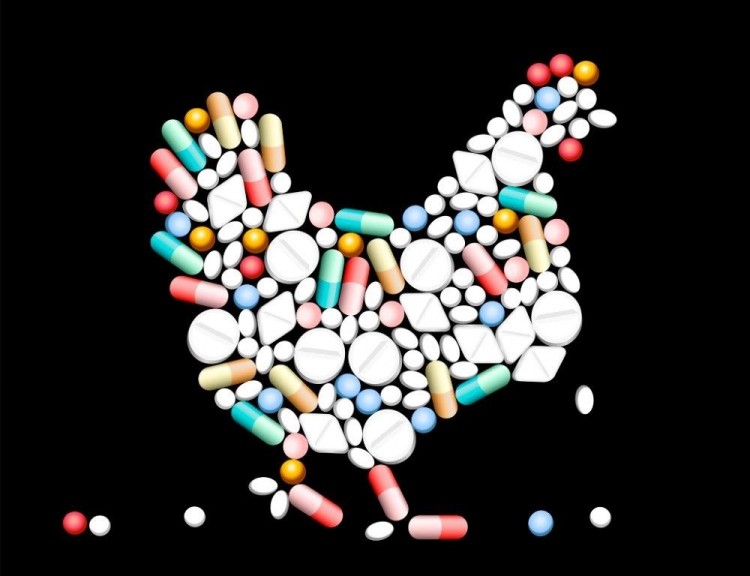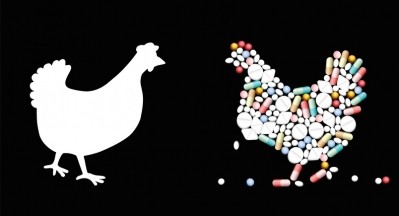FAO wants AGPs totally eliminated from terrestrial and fish farming globally

AGPs have been banned in feed in the EU 28 since 2006. Sweden and Denmark initiated bans prior to that. In Mexico there has been a partial ban on AGPs, with a few exceptions, since 2007 - the law there banned most AGPs, but it provided exceptions for 15 drugs including avoparcin, vancomycin, bacitracin, tylosin, virginiamycin, avilamycin, bambermycin, spiramycin, salinomycin, and monensin. In Korea, antibiotic growth promoters (AGPs) have been banned from in feed use since 2011. Thailand has had a full ban on those drugs since 2012, while New Zealand prohibits the use of the critically important ones. Australia has a partial ban on some AGPs. The US has required a veterinary prescription for their use in feed since 2017. This year saw Indonesia prohibit their in feed use.
Source: Rabobank and Global Health 2013; 9: 48. Published online 2013 Oct 16. doi: 10.1186/1744-8603-9-48
"FAO advocates that antibiotics and other antimicrobials should be only used to cure diseases and alleviate unnecessary suffering. Only under strict circumstances they should be used to prevent an imminent threat of infection," he said.
He also pointed to the use of antimicrobials as biocides on crops, a situation which is leading to some crop funguses becoming more resistant to treatment and which, he said, also needs to stop.
Graziano da Silva was speaking in Divonne les Bains, in France at a meeting on Wednesday [May 30] of the Interagency Coordinating Group on Antimicrobial Resistance, which includes FAO, the World Health Organization (WHO) and the World Organization for Animal Health (OIE).
The FAO calls AMR a growing threat. It said it could lead to as many as 10 million deaths a year and over $100 trillion in losses to the global economy by 2050.
"AMR will not be solved in a few years. It will need continuous attention and guidance,” said the FAO DG.
Supporting actions
While governments play a role in reducing AMR, civil society and the private sector do so as well, he said.
“Only by working together, the international community will be able to address the challenges that antimicrobial resistance poses to sustainable development," he said.
He noted that, to date, only 89 countries have indicated that they have a system in place to collect data on the use of antimicrobials in farm animals.
The FAO said its AMR action plan is aimed at improving awareness on AMR and related threats, developing capacity for surveillance and monitoring, strengthening governance and promoting good practices and the prudent use of antimicrobials.
The organization, along with its partners, is supporting countries and rural communities in implementing that plan.
The government of Ghana launched an antimicrobial resistance policy and a national action plan in April, a move supported by the three agencies, said Graziano da Silva.
The partners, he said, are also assisting the government of Cambodia in the implementation of the responsible use of antimicrobials, while, in Vietnam, the FAO is helping to collect samples in aquaculture systems in order to strengthen surveillance efforts.
More spend needed on animal nutrition science
Meeting in early February, the EU’s One-Health Network on antimicrobial resistance (AMR) mapped out the next stages in its AMR Action Plan, with R&D looming large among its core priorities.
However, as we reported back then, feed groups are concerned that insufficient public research is planned in animal nutrition science.
While the risks around AMR appear to be understood, the potential role that nutritionally optimized feed could play in this is receiving relatively little attention, according to the European Feed Manufacturers’ Federation (FEFAC).
As deputy general secretary, Arnaud Bouxin, explained to FeedNavigator, the EU has already channeled significant sums over the past two or three years towards R&D and innovation aimed at combating AMR. “But the funds allocated to animal nutrition science unfortunately only represent a very small percentage of the total. FEFAC believes that the potential for animal nutrition science to enhance animal health, and thereby reduce AMR, warrants more investment in public research.”
In general terms, the EU’s AMR action plan recommends joint R&D/innovation work in areas such as new antimicrobials, alternatives, vaccines and rapid diagnostic tests, among others. Better co-operation with organisations outside the EU was also necessary, the Commission suggested.
FEFAC has recommendations of its own, including specific projects aimed at confirming the efficacy of animal nutrition solutions. Bouxin added: “There is still a lot of knowledge to be gained to better understand the mechanisms and interactions that allow feeding strategies to enhance animal health and immunological status, especially for young animals.”
Other suggestions from FEFAC included research into the socio-economic drivers behind livestock farmers making use of nutritionally-optimised feed, as well as expert advice, regardless of the production system they follow.














